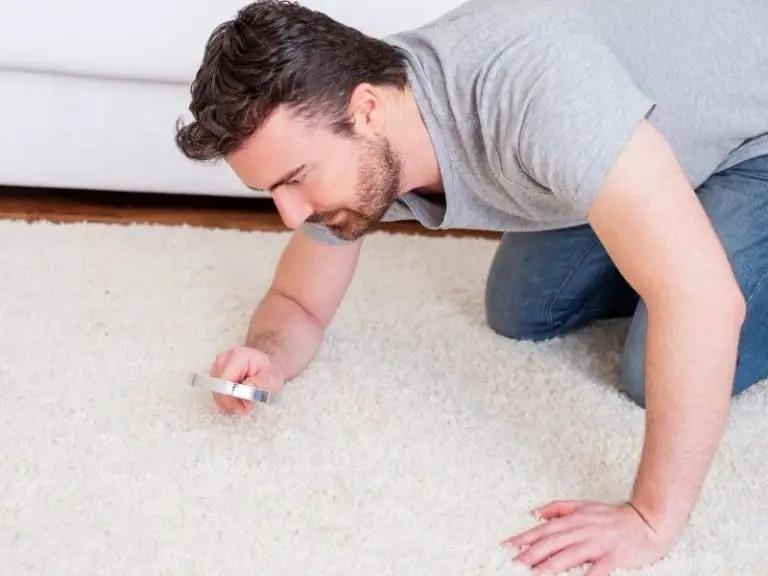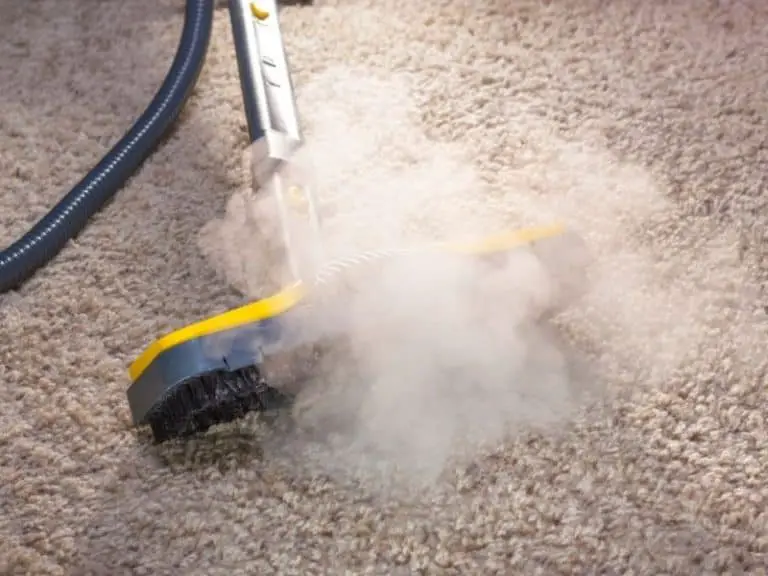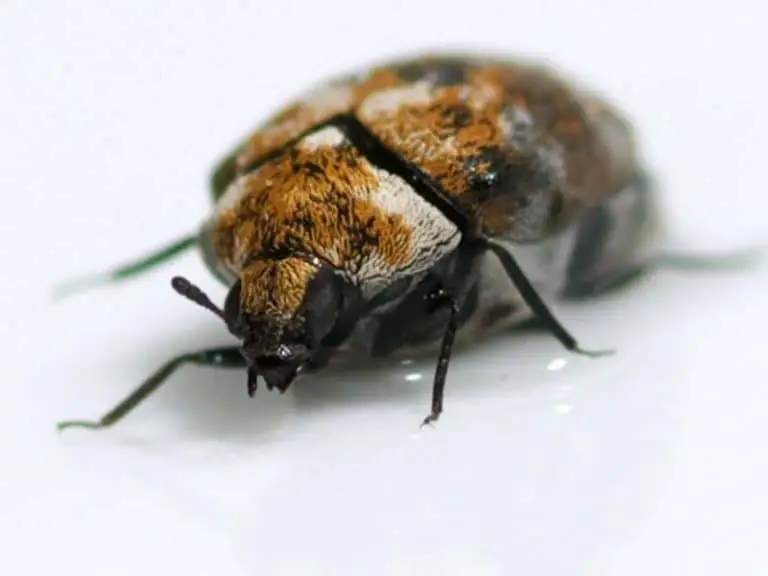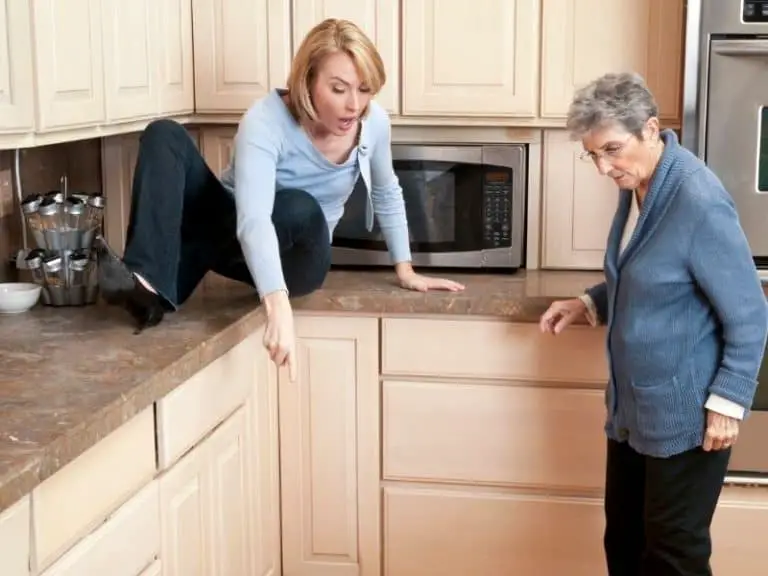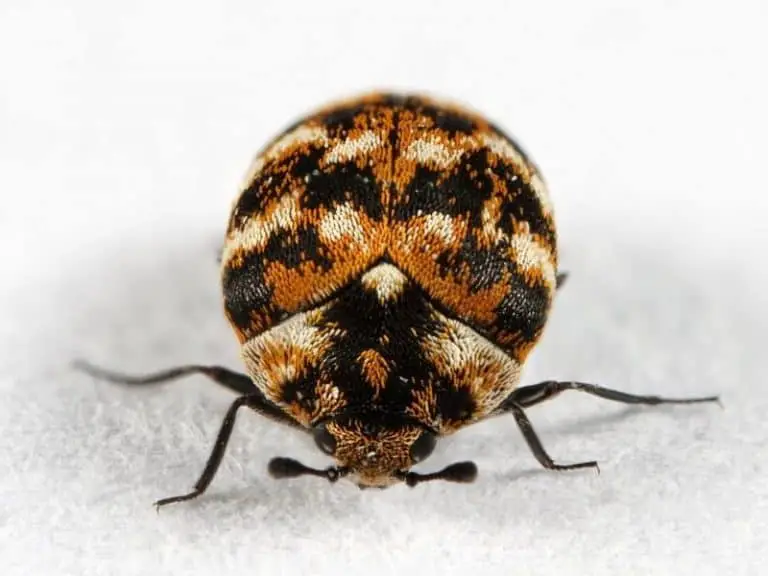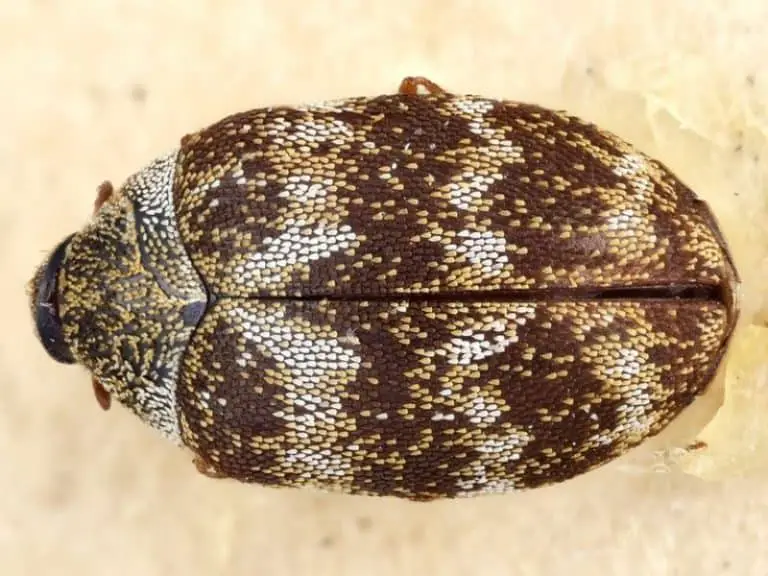Do You Recognize These 15 Signs of Carpet Beetle Infestation?
Are you wondering if you have a carpet beetle infestation? Then keep on reading. Below you will come across not one, not two, but a total of 15 carpet beetle signs.
Usually, the presence of an infestation is discovered only after those larvae carpet beetles have already done a substantial amount of damage, in the form of ruined carpets and upholsteries, holes in clothes and food packaging, and recurring carpet beetle dermatitis — the skin’s reaction upon coming into contact with larvae carpet beetles.
By knowing some of the telltale signs of a carpet beetle infestation, you can uncover the problem earlier. This allows you to spring into action right away, thereby putting the infestation to an end ASAP.
See if you can recognize these 15 signs of carpet beetle infestation.
Holes in Fabric Materials
Clothes out of natural fibers are some of the most favorite treats of larvae carpet beetles. These hairy intruders prefer to eat those that you don’t frequently use — they do not like being disturbed.
Even if your clothes are out of blended fabrics, which are created by combining different kinds of fibers, usually natural and man-made ones, larvae carpet beetles will still eat them.
The only ones that they will stay away from are those purely out of synthetic materials. Some common examples are polyester, rayon, nylon, and spandex.
If you have a carpet beetle infestation, it’s a good idea to wash your dirty clothes right away. That’s because larvae carpet beetles prefer them over clean ones, especially those that have food and beverage stains.
And to rid your clothes of larvae carpet beetles, wash them in hot water for at least 30 minutes.
Please note that larvae carpet beetles are not the only ones that eat natural fibers and leave holes in clothes and other items out of fabrics. There are many other pests that can do the same. Clothes moths are some of them.
However, clothes moths tend to create random holes. On the other hand, the holes made by larvae carpet beetles are in clusters.
Also, clothes moths are not greedy pests — they tend to stay in one place where there’s food. Larvae carpet beetles, on the other hand, prefer to crawl from area to area to enjoy different food sources.
Worn-Out Areas on Carpets or Rugs
Carpet beetles are called as such because they find carpets irresistible. This is especially true if they are out of natural fibers. Some common examples include wool, jute, seagrass, and sisal.
It’s because of this why a carpet beetle infestation can wreak havoc on the appearance of your interiors.
The damage is more significant and noticeable if you have wall-to-wall carpeting. Larvae carpet beetles can also feast on rugs out of natural fibers, which do not come with cheap price tags.
Larvae carpet beetles can make carpets and rugs uneven by nibbling on the individual fibers. Bald spots may occur, too. This happens when those pests chew on the underside structures, causing the fibers above to come loose.
Are your carpets and rugs light in color? Then you may also notice the presence of dark-colored specks about the size of salt grains all over them. Later on, this matter will be discussed. Don’t stop reading now.
Refrain from assuming that your carpet is out of harm’s way just because it’s blended with synthetic fibers.
Chances are that it is a combination of synthetic and wool fibers. This is usually done for durability and aesthetic reasons. The presence of wool, which larvae carpet beetles are fond of eating, can put your carpet in danger.
By the way, it is a good idea to vacuum and steam clean your carpet regularly. It’s because dust, lint, dead insects, food scraps, and beverage stains can make your carpet more enticing to carpet beetles.
And if your carpet is already in a terrible condition and needs replacement, opt for one that’s completely synthetic.
Gnaw Marks on Leather

There are many reasons why some people love getting their hands on leather products. For instance, leather jackets offer superb protection from the cold.
Leather bags make style-conscious people stand out. Leather sofas and couches add sophistication and timelessness to any living space.
Leather products are also known to be durable. Unfortunately, a carpet beetle infestation can change that.
Don’t let the name fool you — larvae carpet beetles do not eat carpets and other items out of natural fibers only. They can munch on all sorts of animal products, too, such as leather.
Worrying is pointless if your clothes, fashion accessories, and household items are out of fake leather. It’s because larvae carpet beetles won’t dare touch them.
However, it’s a different story if they are out of genuine leather. Because they do not come cheap, a carpet beetle infestation should be a cause for concern.
It’s possible that you are sharing your home with carpet beetle larvae if your leather jackets, pants, gloves, belts, shoes, bags, and hats have unsightly gnaw marks on them.
The same is true if you can find gnaw marks on leather sofas and couches, which can lead to holes and tears.
Protecting wearable leather goods from larvae carpet beetles can be as simple as sealing them in plastic containers while there is an infestation.
Similarly, you may place cedar blocks, which can kill carpet beetles, in your cabinets and closets. You can buy cedar blocks from most home improvement and hardware stores.
Sadly, protecting large leather items, such as chairs, from larvae carpet beetles is not as easy.
Shed Skin
As young insects grow, they undergo molting. It’s the process of shedding old exoskeleton or skin to make way for a new one. This is necessary to make sure that their skin can accommodate their growing bodies.
Larvae carpet beetles are some of those that go through molting. The skins they shed are either yellow or light brown in color. They are also dry and crisp.
The empty skins are in the shape of the larvae that cast them off. Coming across molten skins in your home is a guarantee that there are larvae carpet beetles around that are growing.
You can find shed skins where there’s food that larvae carpet beetles can eat. You can spot many of them in the fibers, edges and undersides of carpets, seams and corners of upholstered furniture, and in closets and hampers.
If there are larvae carpet beetles in the pantry, molten skins can be inside and around food packaging.
Before larvae carpet beetles become adults and fly outside to look for pollen and nectar, several months to a couple of years have to pass.
It’s because of their long larval stage why they undergo molting up to 12 times. It all depends on the species of larvae carpet beetles that are infesting your home.
Do not pick up those shed skins with your hands. Especially if your skin reacts adversely to larvae carpet beetles, then coming into contact with their shed skins may cause you to experience the same thing.
The best way to clean skins shed by growing larvae carpet beetles is by using a broom or vacuum cleaner.
Fecal Pellets
Above, the effects of a carpet beetle infestation on carpets were talked about. It was mentioned that seeing dark-colored specks the size of salt grains is one of the various carpet beetle signs.
Those specks are the fecal pellets of larvae carpet beetles. So, in other words, they are poop.
Here’s a general rule of thumb: the more fecal pellets in an area, the more larvae carpet beetles are hiding around.
This is why you may use their own poop against them when trying to rid your home of young carpet beetles. If there’s a food source, it’s very much likely that you will find some fecal pellets.
Larvae carpet beetles can leave their poop practically anywhere. And it includes any food in the pantry that they like. If they have infiltrated a pack of instant macaroni and cheese or a box of cornflakes, it’s possible that they have fecal pellets in them, which can end up in your stomach.
Worry not because the poop of small insects, such as the fecal pellets that larvae carpet beetles leave everywhere, does not contain a lot of bacteria. Also, any microbe present can be killed by your stomach acid.
Besides, with or without an infestation, there is a good chance that something that you are eating has small amounts of insect poop, insect legs, rat hairs, and other nasty stuff.
Those are referred to by the Food and Drugs Administration (FDA) as “food defects”. They are regarded by the FDA as unavoidable and normal.
If you cannot stand the thought of you accidentally consuming something that’s contaminated with carpet beetle poop, then throw away packaged food items that seem like they have been feasted on by these pests.
Holes in Food Packaging
In some instances, a female adult carpet beetle that’s pregnant may end up in the pantry. It will find the area perfect for laying some eggs — it can lay up to a hundred eggs or more at once.
That’s because there’s a lot of food that its babies may eat once they hatch from their eggs.
Larvae carpet beetles have teeth that allow them to gnaw at textile and leather. Definitely, those teeth of theirs can gnaw through cardboard boxes and plastic packaging.
Are you living where carpet beetles are quite common, such as somewhere north of the US? Then it’s a good idea to carpet beetle-proof your pantry.
You can do this by storing everything in plastic containers. Opt for those with an airtight seal to be sure, and go for stackable ones to save space and keep your pantry neat and organized.
When securing food products, pay special attention to those that larvae carpet beetles find irresistible, such as:
- Grains
- Bread
- Flour
- Crackers
- Breakfast cereals
- Seeds
- Pasta
- Spices
- Dried fruits
Your kitchen can be raided by larvae carpet beetles, too. Keeping it clean and clutter-free all the time is important. You may also place pesticide- and odor-free pest traps near carpet beetle food sources.
When it comes to dealing with a carpet beetle infestation, it’s a must that you keep your home clean and clutter-free.
The goal is to get rid of just about anything that larvae carpet beetles can eat, such as food scraps on the floor. The importance of vacuuming regularly cannot be stressed enough.
Pets Scratching a Lot

Do you have a pet? Then its behavior and appearance may sometimes be considered carpet beetle signs, too.
Scratching from time to time is normal in cats and dogs. However, it is a different story if they are doing it non-stop. It’s a cause for concern especially if they are scratching aggressively.
Some of the problems that may result from this are wounds and infections. Pets may also have hair loss and bald spots.
Ticks and fleas are some of the most common culprits for the incessant and aggressive scratching of pets. However, in some cases, the blame can be put on larvae carpet beetles.
Above, it was stated that hairs falling out of animal mounts is one of the many carpet beetle signs. It’s because carpet beetle larvae are fond of eating fur, too.
Unfortunately, it’s not just the fur of animal mounts (or genuine animal rugs and fur coats) that they love to eat. They also find delight in eating the hairs of your furry friend.
To be able to feast on the hairs of your pet, larvae carpet beetles have to crawl on its body. This can make your cat or dog feel really itchy. It doesn’t come as a surprise since those crawling pests are hairy.
Your pet may end up with wounds due to scratching a lot. It may also have bald spots after some time.
A vet may help confirm whether larvae carpet beetles are the cause or something else. He or she may also provide treatment for wounds and infections resulting from constant scratching. However, a vet won’t be able to help put an end to a carpet beetle infestation.
Live Carpet Beetles
Among all the carpet beetle signs, nothing can confirm the presence of these pests more than seeing them with your own eyes.
The minute that you spot them, you can stop wondering — there are in fact carpet beetles inside your home!
This doesn’t mean, however, that you have an infestation that you have to deal with.
Later, you will learn that carpet beetles are quite common in certain parts of the planet. If you are living in one of them, it’s perfectly normal to see some carpet beetles, adults and larvae alike.
There is no need to assume that you have an infestation if they are few and haven’t done any noticeable damage to your clothes and other belongings.
It’s more likely for you to come across live adult carpet beetles near windows. That’s because there is no food available for them inside the home, and chances are that they are trying to escape.
While adult ones are drawn to the light because, for them, light signifies freedom and food, it is a different story when it comes to larvae carpet beetles.
Needless to say, they hate the light. There is no need for them to head out because just about everything that they can eat can be found inside your home.
This is why you should check out dark spots and corners of your home if you want to spot some baby carpet beetles.
However, some larvae carpet beetles may also try to escape your home. This is especially true for those that are about to turn into adults.
If you see some larvae crawling out of the windows or doors, they are just getting ready to become adults and feast on pollen and nectar outside.
Dead Carpet Beetles
Just because you spot a dead carpet beetle in your home doesn’t mean right away that there is an infestation. If it’s an adult, it may just have starved to death for failing to fly back outside on time to have pollen and nectar.
However, it is a different story if the dead carpet beetle that you stumble upon is a larva. There is a possibility that it has brothers and sisters hiding in various places.
Check for signs to confirm whether or not there are larvae carpet beetles around. You can search for live ones near their food sources or look for other signs mentioned in this article.
A young carpet beetle may die because of different reasons. It may have come into contact with something that could kill it, like vinegar or rubbing alcohol. You may also have accidentally stepped or sat on it.
No matter the case, do not pick up a dead larvae carpet beetle with your hands.
Especially if you seem to have bed bug bites, but you are 100% sure that there are no bed bugs around, it could be carpet beetle dermatitis, which will be discussed in a few. Picking up a dead larvae carpet beetle bare-handedly may leave your hand looking red and feeling itchy.
Just because there is a dead larvae beetle doesn’t necessarily mean that there are others around.
It could have ended up in your home already dead or on the brink of death by means of an item that you have brought inside, such as a used furnishing or a potted plant.
Damaged Books
Are you a certified bookworm? Then it’s a must that you spring into action right away the minute that you suspect that your home is housing some destructive larvae carpet beetles.
It’s because their presence can put your collections, the ones that give you so much joy and passion, in grave danger.
When damaged books are mentioned, most people immediately think about floods and fires.
Not too many will think of common household pests as threats to books. Unfortunately, there are a handful of critters that can rob you of the opportunity to enjoy your treasured literary gems.
They are often referred to as “bookworms” just like how book lovers refer to one another.
Some of these bookworms include cockroaches, ants, termites, moths, and silverfish. There are also a number of species of beetles that tend to attack and harm books, and some of them are carpet beetles.
Because the pages of your books, as well as the different binding materials, contain natural fibers, larvae carpet beetles find them just as irresistible as carpets, clothes, fur, leather, and many others.
Especially if your books are undisturbed in cool and dark places, just like how most bookshelves are, they are in danger if larvae carpet beetles are around.
If damage to the pages and covers of your books is caused by larvae carpet beetles, chances are that you will also find shed skins and fecal pellets, the appearances of which were described earlier.
Aside from books, larvae carpet beetles may also snack on magazines, notebooks, phonebooks, and others.
Hairs Falling Out of Animal Mounts
Whether you are into hunting or you just want to give your interiors a rustic look, animal mounts as decorative elements can fill your heart with pride and joy each time you see them.
Unfortunately, they can also fill the tiny mouths of larvae carpet beetles with saliva.
Diet-wise, young carpet beetles are nothing like their adult counterparts that only feed on pollen and nectar. Larvae carpet beetles have a diverse diet.
They won’t have second thoughts devouring animal products, and dead animals are included. This is why animal mounts and those hairy bugs do not mix.
Larvae carpet beetles have a nasty eating habit: when snacking on animal hairs, they take a bite of the base of every strand. This causes the rest to fall out. After some time, you will notice bald spots on your animal mounts.
If a carpet beetle-free indoor living is what you want, consider getting rid of animal mounts. It’s a terrible idea to simply stash them in the garage, attic or basement as those pests will find them.
Placing them in garbage bags before storing them won’t work. The teeth of larvae carpet beetles are strong enough to bore holes in plastic. Just check out the next sign!
Carpet Beetle Dermatitis
There are a couple of reasons why no one wants to have a carpet beetle infestation. First, it can cause damage to clothes and many other belongings. Second, it can leave bed bug bite-like marks on the skin.
A lot of people immediately think that they have bed bugs when they wake up in the morning with red and itchy spots on their skin. In some instances, those are not bed bug bites.
As a matter of fact, those are not bite marks if carpet beetles are the culprits. It’s for the fact that carpet beetles, whether adults or larvae, do not bite humans.
Carpet beetle dermatitis is the term used to describe the adverse reaction of some people to larvae carpet beetles.
Yes, some people only — not everyone ends up itching and scratching each time they come into contact with those fuzzy worm-like creatures. Those who have carpet beetle dermatitis experience signs and symptoms such as:
- Redness and inflammation.
- Rash that looks like bites or welts.
- Itchiness or burning sensation.
- Large, flaccid blisters.
Clearly, the hairs covering the bodies of larvae carpet beetles are responsible for the signs and symptoms mentioned above.
However, it is also possible for someone to have carpet beetle dermatitis after coming into contact with the blood of a carpet beetle larva. Definitely, touching a dead, bloody young carpet beetle is a no-no.
People who spend a lot of time on infested carpets are more likely to have carpet beetle dermatitis. This is why it is more common in kids. Health experts say that those with weak or compromised immune systems are at higher risk, too.
By the way, prolonged exposure to carpet beetles may get rid of carpet beetle dermatitis completely. And aside from the signs and symptoms mentioned above, you may encounter others, too, and they can affect your eyes and breathing. Your digestive system may be affected as well.
Allergy-Like Symptoms

Some people are more sensitive to larvae carpet beetles, in particular the stiff hairs that cover their bodies. If you are one of them, an infestation can wreak more havoc on your life.
Larvae carpet beetles can cause the fibers of your carpet to come loose, especially if they munch on the structures under the carpet.
Similarly, the hairs on their bodies can come loose as they crawl from one feeding or hiding place to the other. Because they are lightweight, those dislodged hairs can get circulated in the air.
If your body is not particularly fond of the hairs of carpet beetle larvae, you may experience all sorts of unfavorable signs and symptoms when you come into contact with them.
For instance, it is possible for your eyes to become red, itchy and watery in case they get in your peepers. This is called “pink eye”, or what people in the medical community refer to as “conjunctivitis”. This eye condition is commonly caused by a bacterial or viral infection.
However, it can also be due to an allergic reaction, such as one caused by larvae carpet beetle hairs.
If you are really sensitive to carpet beetles, you may also have sneezing and a runny nose. This is especially true if the hairs of larvae carpet beetles circulating in the indoor air end up in your airways.
Some people are so allergic to larvae carpet beetles that they develop asthma-like symptoms, too.
In case you experience breathing difficulties due to exposure to those hairy pests, call 911 or have someone take you to the hospital right away. It is an emergency case that can put your life in danger.
Digestive Upset
It’s not just dermatological, ocular and respiratory problems that a carpet beetle infestation may cause. In rare instances, it may also produce all kinds of digestive issues.
The symptoms can differ from person to person. The number of those fuzzy pests ingested is also a factor.
Earlier, it was mentioned that larvae carpet beetles could invade pantries, too. Other than natural fibers and animal-based products, they can feast on a number of human foods as well.
Many of the things that they love to eat from time to time can be found in pantries, from milled products, grains, seeds, pasta, crackers, to dried fruits.
Some larvae carpet beetles may end up inside food packaging. Because of this, it’s not unlikely for some of them to wind up on your plate. In some cases, dislodged hairs may be the ones in your meal.
No matter if the ones ingested are larvae carpet beetles or just the hairs, digestive problems may strike.
For instance, back in 1955, a middle-aged woman from London complained of itching in the anal area. The doctors she approached thought that she had pinworms.
But, after a stool examination, they learned that the culprits were not parasitic worms but the larvae of carpet beetles.
The larvae found in her stool were black carpet beetles, which used to be native to Europe.
It was also mentioned earlier that larvae carpet beetles might eat dry pet food, too. If live or dead carpet beetles are ingested, your cat or dog may lose appetite or show signs of digestive distress.
Neighbors Calling Pest Control
Did you know that some parts of the planet have more carpet beetles than the rest? In the US, they can be found practically everywhere.
However, they are more common in the northern states where it’s cold. That’s because carpet beetles are cold-blooded creatures, and they prefer to lay their eggs indoors where it’s warmer.
Carpet beetles are seasonal pests, too. More homeowners encounter them in springtime, just when most of them are busy with their spring cleaning endeavors.
If you are living where carpet beetles are quite common, and it’s spring or early summer, be wary if there is a pest control van parked in front of the house of a neighbor.
If your neighbor has a carpet beetle infestation, it’s possible that you have it, too — a quick ocular inspection will reveal whether or not you also have a problem.
This does not mean, however, that you should get in touch with a local exterminating company.
Do you see just a few larvae carpet beetles? Then you may try dealing with them by means of some home remedies. Some of the most effective against those hairy assailants include:
- Spraying them and their eggs with vinegar, rubbing alcohol, or essential oils (like peppermint and clove).
- Vacuuming and steam cleaning carpets, rugs, mattresses, box springs, and upholstered furnishings.
- Washing clothes and other launderable items in hot water.
- Removing dead insects and animals in the garage, attic, basement, vents, ducts, and wall and ceiling void.
- Sprinkling diatomaceous earth, baking soda, and boric acid (use with caution) on trouble spots.
- Storing pantry items in plastic containers to keep them off-limits.
- Placing pest traps with glue pads and pheromone attractants (optional) near sources of food.
- Keeping your home clean and clutter-free — larvae carpet beetles feed on lint, food scraps, hair, etc.
Before You Assume That You Have a Carpet Beetle Infestation
Just because you have one or two of the 15 signs mentioned above doesn’t mean right away that you have a carpet beetle infestation.
While many of them can confirm the presence of carpet beetles in your home, such as seeing actual adult or larvae carpet beetles, it doesn’t mean right away that you should be worried.
Again, in some parts of the planet, carpet beetles are quite common.
Some of the signs mentioned above are not exclusive to a carpet beetle issue. A few examples are holes in food packaging, pet scratching a lot, allergy-like symptoms, and digestive upset.
Without the presence of a lot of larvae carpet beetles in your home, they could be due to some other things, and finding out what they are is key.
Photo credit: ©canva.com/luariek, ©canva.com/siphotography, ©canva.com/wacharaphong, ©canva.com/kerkez
Medical Disclaimer: TheHomePestControl is a digital publisher and does not offer personal health or medical advice. The contents of this website are not intended to substitute for professional medical advice, diagnosis, or treatment.
Affiliate Disclaimer: As an Amazon Associate, I earn from qualifying purchases made on our website. If you make a purchase through links from this website, I may earn a commission at no additional cost to you.

